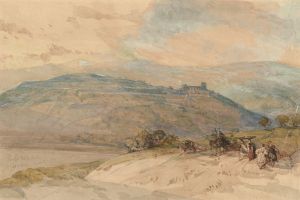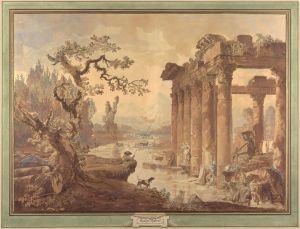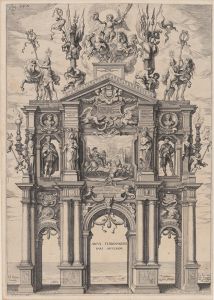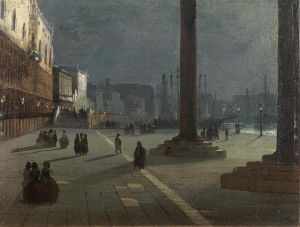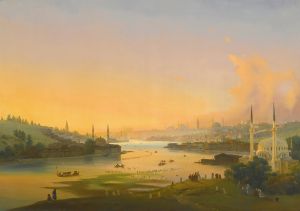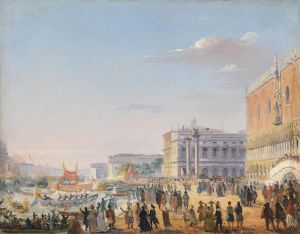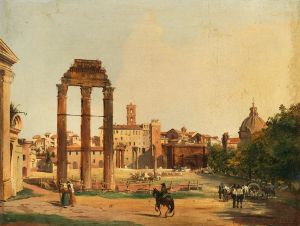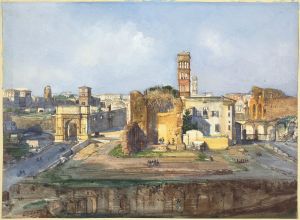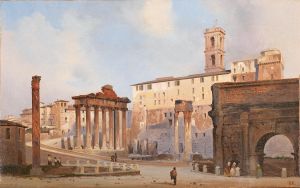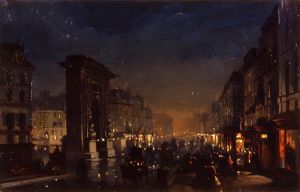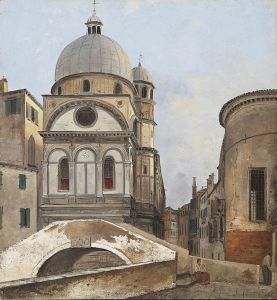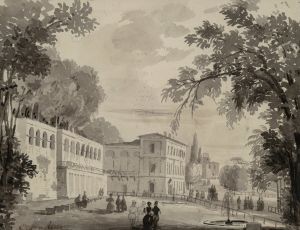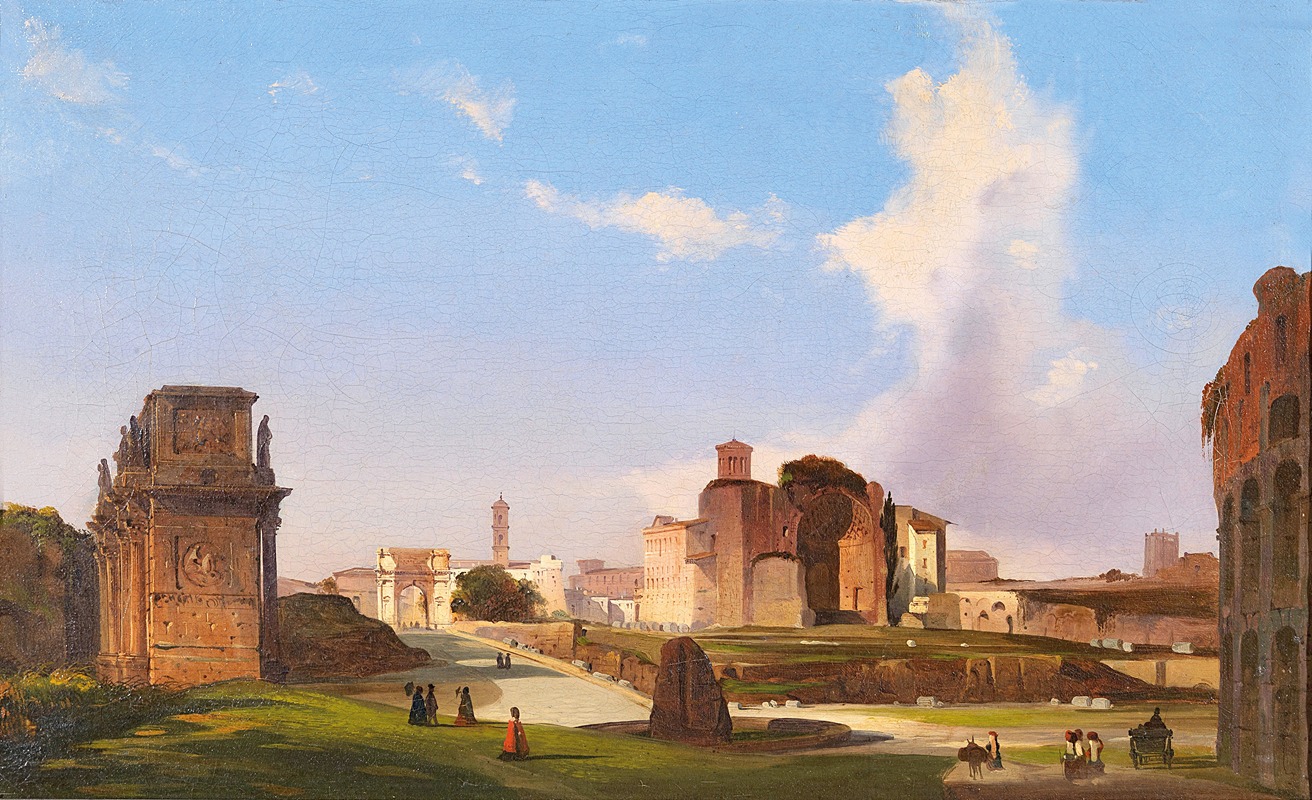
A View Of The Roman Forum With The Arch Of Constantine
A hand-painted replica of Ippolito Caffi’s masterpiece A View Of The Roman Forum With The Arch Of Constantine, meticulously crafted by professional artists to capture the true essence of the original. Each piece is created with museum-quality canvas and rare mineral pigments, carefully painted by experienced artists with delicate brushstrokes and rich, layered colors to perfectly recreate the texture of the original artwork. Unlike machine-printed reproductions, this hand-painted version brings the painting to life, infused with the artist’s emotions and skill in every stroke. Whether for personal collection or home decoration, it instantly elevates the artistic atmosphere of any space.
Ippolito Caffi was an Italian painter known for his vivid and atmospheric depictions of urban landscapes and historical scenes. One of his notable works is "A View of the Roman Forum with the Arch of Constantine," which captures the grandeur and historical significance of one of Rome's most iconic sites. Caffi's work is characterized by his keen attention to detail and his ability to convey the interplay of light and shadow, which brings his scenes to life.
The painting "A View of the Roman Forum with the Arch of Constantine" showcases the Roman Forum, a central area around which ancient Rome developed. The Forum was the heart of Roman public life, hosting triumphal processions, elections, public speeches, and criminal trials. It was also a marketplace and the nucleus of commercial affairs. The painting prominently features the Arch of Constantine, a triumphal arch in Rome, situated between the Colosseum and the Palatine Hill. The arch was erected by the Roman Senate to commemorate Constantine I's victory over Maxentius at the Battle of Milvian Bridge in 312 AD.
Caffi's depiction of the Roman Forum is notable for its historical accuracy and artistic skill. He captures the architectural details of the ruins with precision, highlighting the grandeur of the ancient structures even in their dilapidated state. The Arch of Constantine, with its three archways and intricate reliefs, stands as a testament to the engineering prowess and artistic achievements of the Roman Empire. Caffi's use of light in the painting enhances the textures of the stone and the play of shadows, creating a dynamic and immersive scene.
The painting reflects Caffi's interest in the interplay between past and present, a theme common in his work. By portraying the ancient ruins in the context of his contemporary 19th-century Rome, Caffi invites viewers to reflect on the passage of time and the enduring legacy of Roman civilization. His work often evokes a sense of nostalgia and admiration for the achievements of the past, while also acknowledging the changes brought about by time and modernity.
Ippolito Caffi was born in Belluno, Italy, in 1809. He studied at the Academy of Fine Arts in Venice, where he developed his skills in perspective and architectural painting. Caffi traveled extensively throughout Europe and the Middle East, drawing inspiration from the diverse landscapes and historical sites he encountered. His travels informed his artistic style, which combines elements of Romanticism and Realism.
Caffi's work was well-received during his lifetime, and he exhibited in various prestigious venues, including the Paris Salon. However, his career was cut short when he died in 1866 during the Battle of Lissa, a naval engagement in the Third Italian War of Independence. Despite his untimely death, Caffi left behind a rich legacy of paintings that continue to be admired for their technical skill and evocative portrayal of historical subjects.
"A View of the Roman Forum with the Arch of Constantine" remains an important work within Caffi's oeuvre, exemplifying his mastery of architectural painting and his ability to capture the spirit of historical sites. Through this painting, Caffi not only documents the physical appearance of the Roman Forum but also conveys its historical and cultural significance, offering viewers a glimpse into the grandeur of ancient Rome.





